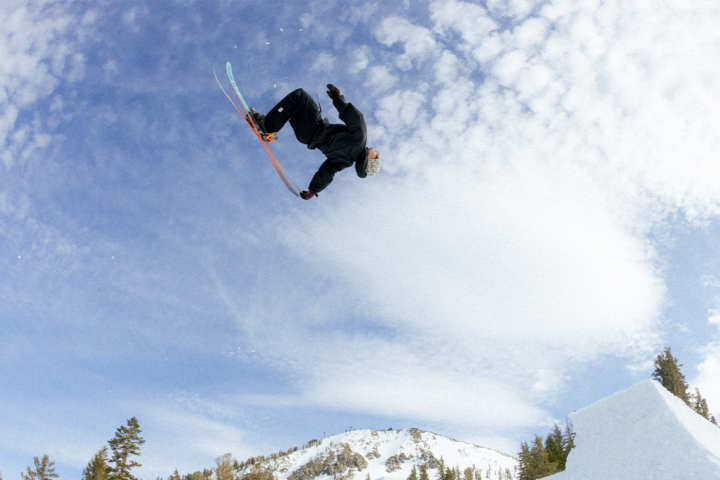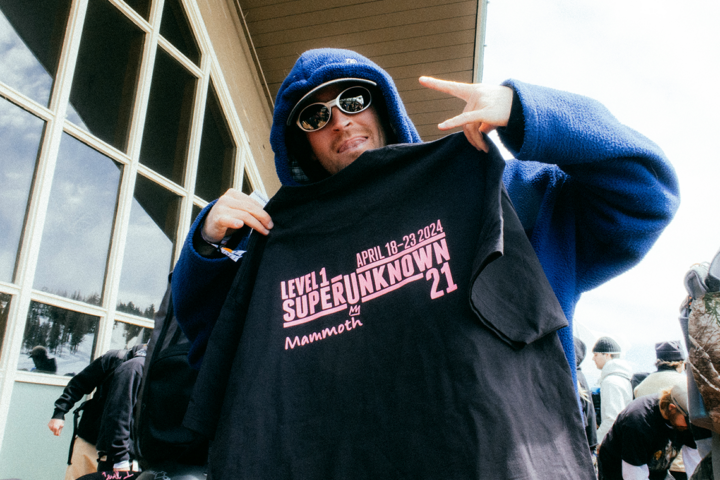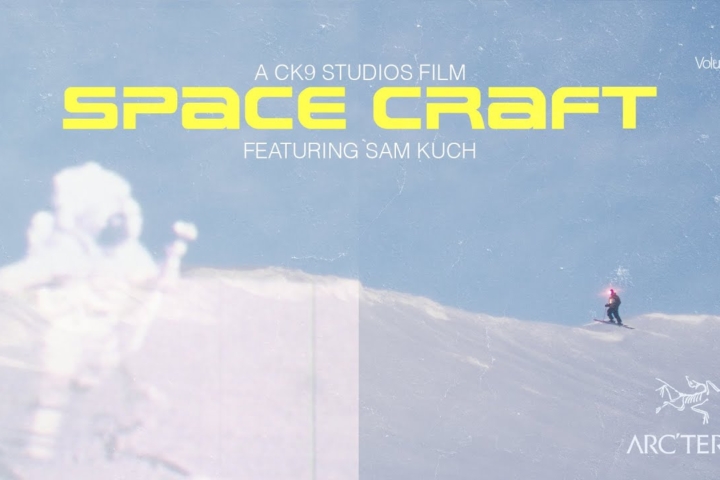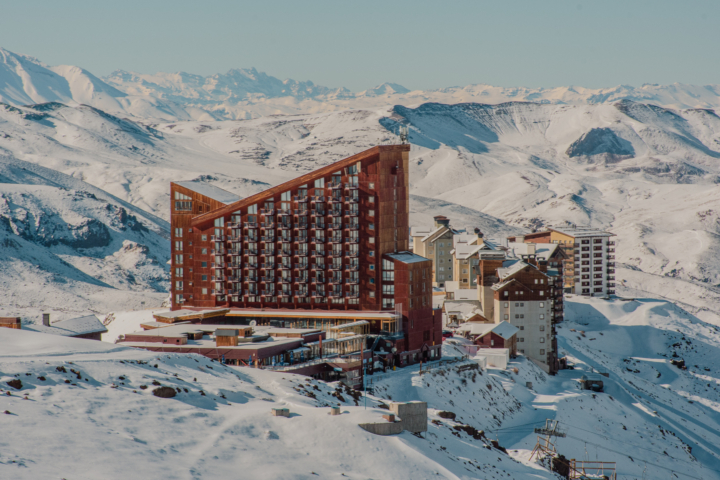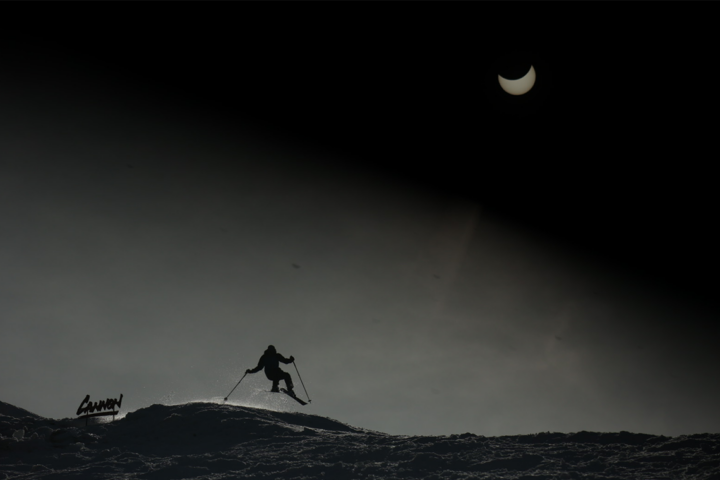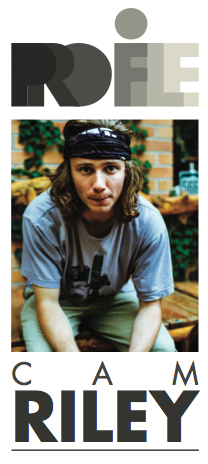 VITALS
VITALS
AGE: 24
HOMETOWN: BEVERLY, MA
SPONSORS: K2, FULL TILT, CITY PROSPECT, FIRE ON THE MOUNTAIN
ON FILM: THE EIGHTY SIX_STEPT,
WE: A COLLECTION OF INDIVIDUALS_PBP, THE DREAM FACTORY_TGR
Interview and portrait by Nate Abbott.
I walk up to the patio of Alex Martini’s home on Boulder, CO’s University Hill, where students and semi-students live the dream, to see Cam Riley demonstrating the exact definition of chilling. It’s a perfect evening, with a bit of color in the late-day clouds and a couple of cold beverages scattered around to beat the vestigial heat of an August day. Cam is cool— far from the screaming ski pole breaker we’ve become accustomed to seeing hit huge drops and gaps in Stept and PBP flicks the last few years. But his passion for his own skiing and his role as co-director of Stept movies is bubbling beneath the surface, just waiting for snow.
What was your best single trip last season? I filmed this last year with Stept and Poor Boyz and did one trip with TGR to Alaska. I had a trip with Poor Boyz to Spokane where it was just Clayton Vila and me. That was probably the most successful trip of my season. Every spot we went to was pretty much a success. We didn’t run into too much trouble with the law, which is always a positive thing. Got in and out in seven or eight days, and I left with a majority of my segment for Poor Boyz.
Do you think you can do an urban trip longer than that? The one I did in Alaska with TGR spanned about 10 days. I was definitely beat as shit at the end of it. I didn’t have much more in me. That’s right around the limit of how long you can go in one stretch. It wears on you—long hours. On our trip here in Denver, we were doing probably 21-hour days ’cause when snow falls around Denver it comes and goes real quick. I was hitting three spots a day, sometimes more, sleeping for three hours here and there.
How aggravating is it when features don’t work, since there are so many things that have to come together? It’s obviously very frustrating, as many people have seen me display in a lot of my video parts [laughs]. There are a lot of elements that don’t go right at times, whether it’s the law or just your skiing ability on that given day; sometimes it doesn’t fall into place. That’s why it’s so rewarding when it all does. Sometimes you’ll get a shot that’s not exactly what you wanted, but you put so much effort into getting it, it’s hard not to use it. You’ve got to accept the fact that it’s to your benefit to just disregard that shot.
 Are you getting better at setting up features? Everyone has sort of gotten to a new level, the filmers, the skiers. We know what features we have in mind, we know how to set them up. There’s an art to it. Everyone’s been all into the tranny game lately rather than just landing flat, and it took a little while to figure out the processes there. You want to make those things a lot harder than you think. Even though you’re dropping maybe 15 feet to one of them, you want to make ’em hard as a rock. That was hard to accept at first.
Are you getting better at setting up features? Everyone has sort of gotten to a new level, the filmers, the skiers. We know what features we have in mind, we know how to set them up. There’s an art to it. Everyone’s been all into the tranny game lately rather than just landing flat, and it took a little while to figure out the processes there. You want to make those things a lot harder than you think. Even though you’re dropping maybe 15 feet to one of them, you want to make ’em hard as a rock. That was hard to accept at first.
[Photo taken in Duluth, MN by Christopher Baldwin_Stept.]
Where does your ski aesthetic come from? For me personally, when I started out in skiing, I wanted to just be good in the same way that everybody else was trying to be good. There was only really one way: you had all the tricks, you had good style, you did well in all the competitions. Skiing didn’t pan out quite as well for me in that way. I did my comps when I was in high school. Then we realized this potential to focus on specific aspects of it. Handrail skiing, street skiing was gaining respect, and I jumped on the opportunity.
I got some inspiration from Alex Martini, he had done some different stuff. Optimistic by Absinthe was one of the first films where the majority of the urban featured wasn’t done on down rails or dub kinks. It was all kinds of wall rides and gaps. I was like, there’s definitely more to this than learning swaps and two-ons, and I had the ability to do that. In the past I had focused on the technical aspects—throw another switch up in there— rather than just to ski well, be solid on my skis on varying terrain. That’s what the stuff that people are doing now displays. As the director of our film, and as a skier myself, I just want to show what I’m capable of.

